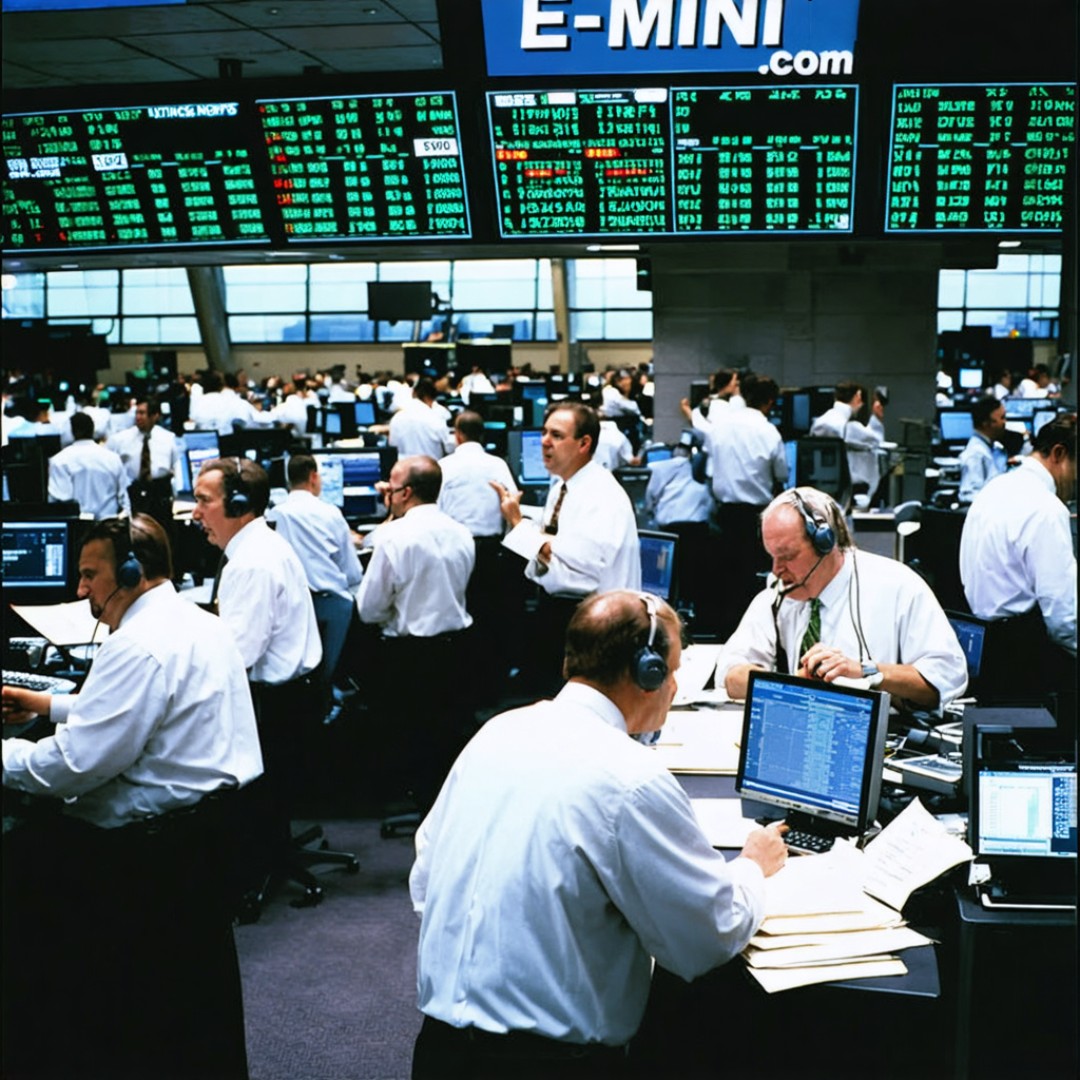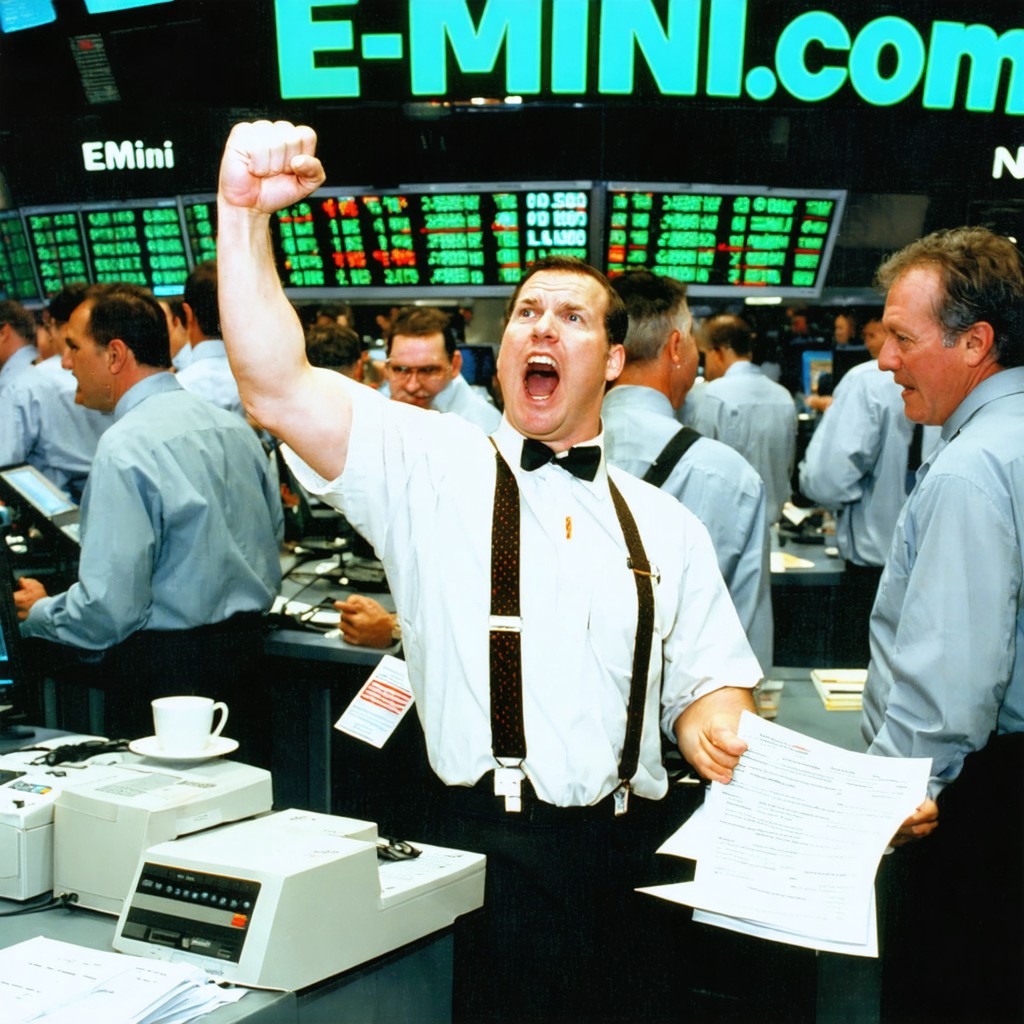Futures trading has long been a cornerstone of the financial markets, offering a versatile tool for hedging, speculation, and portfolio diversification. Among the various types of futures contracts, E-Mini futures have emerged as a popular and accessible option for traders of all levels. This article delves into the history of futures trading, the development of E-Mini futures, and the current landscape of trading these instruments, including E-Micro futures. We will also explore the best platforms and brokerages for futures trading.
The History of Futures Trading
Early Beginnings
The concept of futures trading dates back to ancient times, with evidence of forward contracts used in Mesopotamia around 2000 BC. These early agreements allowed traders to lock in prices for the future delivery of goods, helping to mitigate the risks associated with price fluctuations. Similar practices were observed in medieval Europe, where merchants and farmers entered into agreements to buy or sell agricultural products at a predetermined price and date.
The Formation of Organized Exchanges
The modern era of futures trading began with the establishment of organized exchanges in the 19th century. The Chicago Board of Trade (CBOT), founded in 1848, was one of the first formal futures exchanges. Initially, the CBOT focused on agricultural commodities such as wheat, corn, and soybeans. The introduction of standardized contracts and centralized trading floors revolutionized the market, providing greater transparency, liquidity, and risk management for participants.
Expansion to Financial Futures
The landscape of futures trading expanded significantly in the latter half of the 20th century with the introduction of financial futures. In 1972, the Chicago Mercantile Exchange (CME) launched the first currency futures contracts. This was followed by the introduction of interest rate futures and stock index futures. These new contracts opened the door for a broader range of market participants, including institutional investors and speculators, to hedge against or profit from movements in financial markets.
The Birth of E-Mini Futures
Introduction and Purpose
The concept of E-Mini futures was introduced by the CME in 1997. The goal was to create a smaller, more accessible version of the standard futures contracts, which had become increasingly popular but were often too large and capital-intensive for individual traders and smaller institutions.
Key Features and Benefits
E-Mini futures are electronically traded contracts that represent a fraction of the size of their standard counterparts. For example, the E-Mini S&P 500 futures contract (ES) represents one-fifth of the value of a standard S&P 500 futures contract. This smaller size makes E-Mini futures more affordable, with lower margin requirements and reduced risk exposure.
Some key benefits of E-Mini futures include:
- Accessibility: Lower capital requirements make E-Mini futures accessible to a wider range of traders.
- Liquidity: High trading volumes ensure ample liquidity, allowing traders to enter and exit positions easily.
- Flexibility: E-Mini futures cover a variety of asset classes, including equity indices, commodities, and currencies.
- Transparency: Electronic trading provides greater transparency and faster execution compared to traditional open outcry systems.
E-Micro Futures: An Even Smaller Option
In response to the success of E-Mini futures, the CME introduced E-Micro futures in 2009. These contracts are even smaller than E-Mini futures, typically representing one-tenth of the value of an E-Mini contract. E-Micro futures offer several advantages:
- Lower Financial Commitment: The smaller contract size further reduces the financial barrier to entry, making futures trading accessible to more individual investors.
- Reduced Risk: Smaller contract sizes mean lower exposure to market movements, which can be beneficial for risk management.
- Flexibility: E-Micro futures cover a range of asset classes, similar to E-Mini futures, providing diverse trading opportunities.
Trading E-Mini Futures: Strategies and Considerations
Day Trading E-Mini Futures
Day trading involves buying and selling futures contracts within the same trading day to capitalize on short-term price movements. E-Mini futures are particularly well-suited for day trading due to their high liquidity and tight bid-ask spreads. Common day trading strategies include:
- Scalping: Making numerous small trades to profit from minor price fluctuations.
- Momentum Trading: Trading based on the momentum of price movements, entering positions in the direction of the prevailing trend.
- Breakout Trading: Identifying and trading on price breakouts from established support or resistance levels.
Swing Trading E-Mini Futures
Swing trading aims to capture price swings over several days or weeks. This strategy involves holding positions for a longer period than day trading, allowing traders to profit from larger price movements. Key techniques for swing trading include:
- Trend Following: Identifying and trading in the direction of prevailing market trends.
- Range Trading: Buying at support levels and selling at resistance levels within a defined price range.
- Retracement Trading: Entering trades during temporary pullbacks within a broader trend.
Hedging with E-Mini Futures
E-Mini futures are also widely used for hedging purposes. Institutional investors, portfolio managers, and corporations use these contracts to protect against adverse price movements in underlying assets. For example, an investor holding a diversified equity portfolio might use E-Mini S&P 500 futures to hedge against potential market downturns.
Best Futures Trading Platforms and Brokerages
Choosing the right platform and brokerage is crucial for successful futures trading. Here are some of the best options available:
Futures Trading Brokerages
E-Mini.com: E-mini.com specializes in providing resources and tools for trading E-mini futures, offering a user-friendly platform designed for both beginners and experienced traders. The brokerage focuses on delivering real-time market data, educational content, and personalized support to help traders navigate the complexities of the E-mini futures market.
E-Futures.com: E-Futures.com offers a comprehensive trading platform with a wide range of futures products, including E-mini futures. The brokerage provides advanced charting tools, competitive commission rates, and a robust support system, making it an excellent choice for traders seeking a reliable and efficient futures trading experience.
Cannon Trading Company, Inc.: Cannon Trading Company, Inc. is known for its diverse range of trading platforms and personalized customer service, catering to both retail and institutional futures traders. The brokerage offers competitive pricing, extensive educational resources, and expert support, making it a well-rounded choice for those looking to trade E-mini futures and other futures contracts.
Interactive Brokers: Known for its low commissions and wide range of trading instruments, Interactive Brokers is a top choice for futures traders. The brokerage offers direct market access and advanced trading platforms, making it ideal for active traders.
TD Ameritrade: With its Think or swim platform, TD Ameritrade provides a robust trading environment for futures traders. The brokerage offers competitive pricing and excellent customer support, along with extensive research and educational resources.
E*TRADE: E*TRADE offers a user-friendly platform and competitive pricing for futures trading. The brokerage provides a range of trading tools and resources, making it suitable for traders of all experience levels.
Futures trading, particularly trading E-Mini futures, has evolved into a dynamic and accessible avenue for investors and traders. From its ancient origins to the development of modern electronic trading platforms, the futures market has continuously adapted to meet the needs of its participants. E-Mini and E-Micro futures, with their lower capital requirements and high liquidity, have democratized futures trading, allowing individual traders and smaller institutions to participate alongside larger players.
Whether you are a day trader looking to capitalize on short-term price movements, a swing trader aiming to capture broader market trends, or a hedger seeking to protect your investments, E-Mini futures offer a versatile and powerful tool to achieve your financial goals. By choosing the right trading strategies and leveraging the best platforms and brokerages, you can navigate the complexities of the futures market and unlock its potential for profit and growth.
Ready to start trading futures? Call US 1(800)454-9572 – Int’l 1(310)859-9572 email info@e-mini.com and speak to one of our experienced, Series-3 licensed futures brokers and start your futures trading journey with E-Mini.com today.
Disclaimer – Trading Futures, Options on Futures, and retail off-exchange foreign currency transactions involves substantial risk of loss and is not suitable for all investors. Past performance is not indicative of future results. You should carefully consider whether trading is suitable for you in light of your circumstances, knowledge, and financial resources. You may lose all or more of your initial investment. Opinions, market data, and recommendations are subject to change at any time.
Important: Trading commodity futures and options involves a substantial risk of loss. The recommendations contained in this writing are of opinion only and do not guarantee any profits. This writing is for educational purposes. Past performances are not necessarily indicative of future results.
**This article has been generated with the help of AI Technology. It has been modified from the original draft for accuracy and compliance.
***@cannontrading on all socials.







